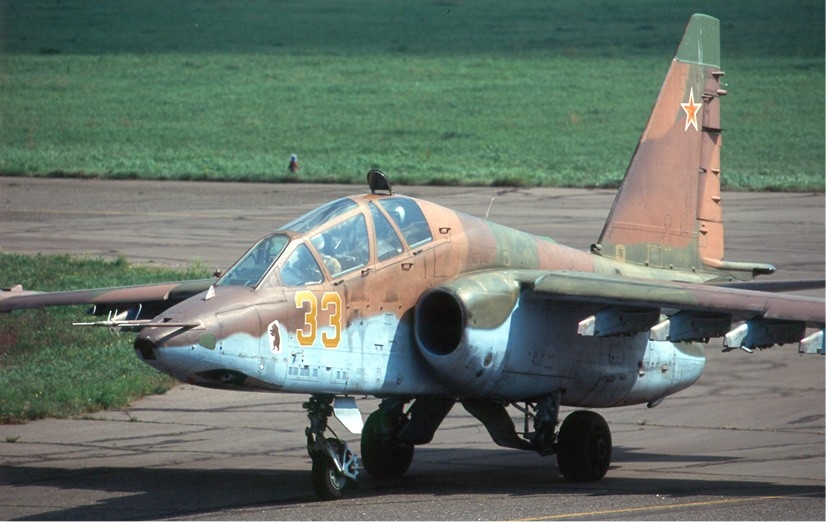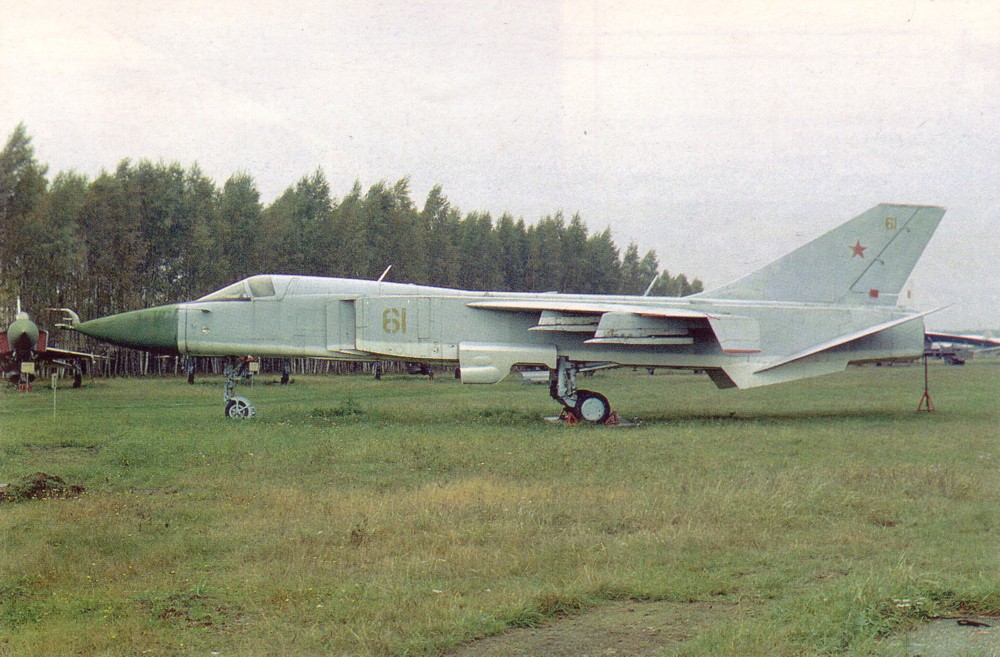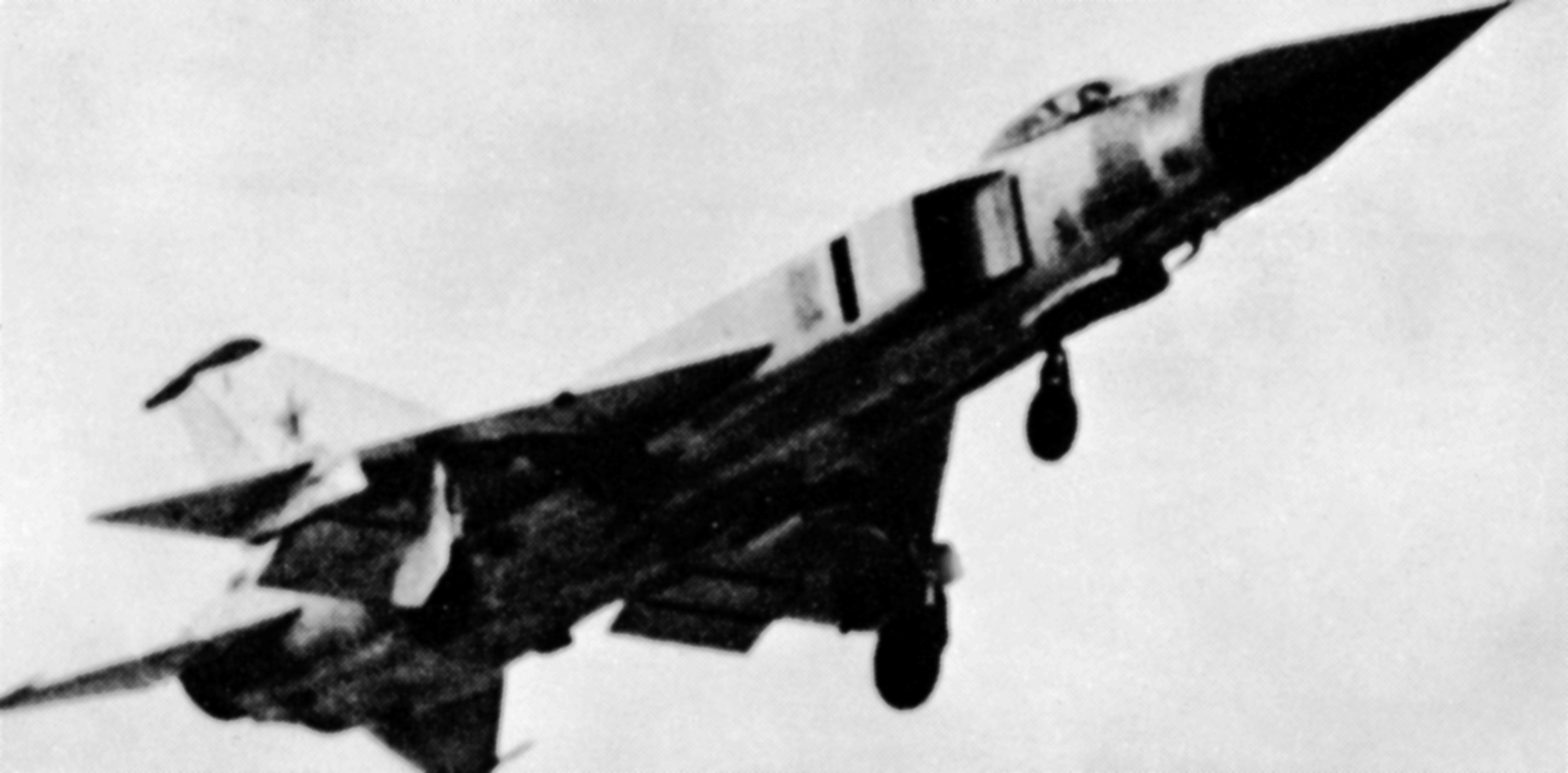|
Vladimir Ilyushin
Vladimir Sergeyevich Ilyushin (russian: Владимир Серге́евич Ильюшин; 31 March 1927 – 1 March 2010) was a Soviet general and test pilot, and the son of aerospace engineer Sergey Ilyushin. He spent most of his career as a test pilot for the Sukhoi OKB (a rival of Ilyushin OKB). Ilyushin was also a rugby union administrator who was inducted into the World Rugby Hall of Fame (then known as the IRB Hall of Fame) in 2013. In 1961, Ilyushin was the subject of a conspiracy theory that he, rather than Yuri Gagarin, was the first cosmonaut in space. There is no evidence and no support to the theory. Career as test pilot Ilyushin was a test pilot and lieutenant general in the Soviet Air Forces. He piloted the maiden flights of the Sukhoi's Su-11 (1958), Т-5 (1958), Su-15 (1962), Su-17 (1966), Su-24 (1967), Т-4 (1972), Su-25 (1975) and the Su-27 (1977). Ilyushin demonstrated his outstanding piloting skills as a test pilot of the Sukhoi Su-24. He flew a cours ... [...More Info...] [...Related Items...] OR: [Wikipedia] [Google] [Baidu] |
Soviet Union
The Soviet Union,. officially the Union of Soviet Socialist Republics. (USSR),. was a transcontinental country that spanned much of Eurasia from 1922 to 1991. A flagship communist state, it was nominally a federal union of fifteen national republics; in practice, both its government and its economy were highly centralized until its final years. It was a one-party state governed by the Communist Party of the Soviet Union, with the city of Moscow serving as its capital as well as that of its largest and most populous republic: the Russian SFSR. Other major cities included Leningrad (Russian SFSR), Kiev (Ukrainian SSR), Minsk ( Byelorussian SSR), Tashkent (Uzbek SSR), Alma-Ata (Kazakh SSR), and Novosibirsk (Russian SFSR). It was the largest country in the world, covering over and spanning eleven time zones. The country's roots lay in the October Revolution of 1917, when the Bolsheviks, under the leadership of Vladimir Lenin, overthrew the Russian Provisional Government ... [...More Info...] [...Related Items...] OR: [Wikipedia] [Google] [Baidu] |
Ilyushin
The public joint stock company Ilyushin Aviation Complex, operating as Ilyushin (russian: Илью́шин) or as Ilyushin Design Bureau, is a former Soviet and now a Russian aircraft manufacturer and design bureau, founded in 1933 by Sergey Vladimirovich Ilyushin. Soviet/Russian nomenclature identifies aircraft from Ilyushin with the prefix "Il-" ( ru , Ил-). Ilyushin has its head office in Aeroport District, Northern Administrative Okrug, Moscow. History Ilyushin was established under the Soviet Union. Its operations began on 13 January 1933, by order of P. I. Baranov, People's Commissar of the Heavy Industry and the Head of the Main Department of Aviation Industry. In 1970, the position of chief designer was taken by G. V. Novozhilov In 2006 the Russian government merged Ilyushin with Mikoyan, Irkut, Sukhoi, Tupolev, and Yakovlev under a new company named United Aircraft Corporation. [...More Info...] [...Related Items...] OR: [Wikipedia] [Google] [Baidu] |
Software
Software is a set of computer programs and associated documentation and data. This is in contrast to hardware, from which the system is built and which actually performs the work. At the lowest programming level, executable code consists of machine language instructions supported by an individual processor—typically a central processing unit (CPU) or a graphics processing unit (GPU). Machine language consists of groups of binary values signifying processor instructions that change the state of the computer from its preceding state. For example, an instruction may change the value stored in a particular storage location in the computer—an effect that is not directly observable to the user. An instruction may also invoke one of many input or output operations, for example displaying some text on a computer screen; causing state changes which should be visible to the user. The processor executes the instructions in the order they are provided, unless it is instructed ... [...More Info...] [...Related Items...] OR: [Wikipedia] [Google] [Baidu] |
Sukhoi Su-27
The Sukhoi Su-27 (russian: Сухой Су-27; NATO reporting name: Flanker) is a Soviet-origin twin-engine supermaneuverable fighter aircraft designed by Sukhoi. It was intended as a direct competitor for the large US fourth-generation jet fighters such as the Grumman F-14 Tomcat and McDonnell Douglas F-15 Eagle, with range, heavy aircraft ordnance, sophisticated avionics and high maneuverability. The Su-27 was designed for air superiority missions, and subsequent variants are able to perform almost all aerial warfare operations. It was designed with the Mikoyan MiG-29 as its complement. The Su-27 entered service with the Soviet Air Forces in 1985. The primary role was long range air defence against American SAC Rockwell B-1B Lancer and Boeing B-52G and H Stratofortress bombers, protecting the Soviet coast from aircraft carriers and flying long range fighter escort for Soviet heavy bombers such as the Tupolev Tu-95, Tupolev Tu-22M and Tupolev Tu-160. The Su-27 was d ... [...More Info...] [...Related Items...] OR: [Wikipedia] [Google] [Baidu] |
Sukhoi Su-25
The Sukhoi Su-25 ''Grach'' (russian: Грач (''rook''); NATO reporting name: Frogfoot) is a subsonic, single-seat, twin-engine jet aircraft developed in the Soviet Union by Sukhoi. It was designed to provide close air support for Soviet Ground Forces. The first prototype made its maiden flight on 22 February 1975. After testing, the aircraft went into series production in 1978 in Tbilisi in the Georgian Soviet Socialist Republic. Early variants included the Su-25UB two-seat trainer, the Su-25BM for target-towing, and the Su-25K for export customers. Some aircraft were upgraded to the Su-25SM standard in 2012. The Su-25T and the Su-25TM (also known as the Su-39) were further developments, not produced in significant numbers. The Su-25, and the Su-34, were the only armoured, fixed-wing aircraft in production in 2007.Gordon and Dawes 2004. Su-25s are in service with Russia, other CIS members, and export customers. Production of the Su-25 ended in 2017 in Russia and 2010 in Ge ... [...More Info...] [...Related Items...] OR: [Wikipedia] [Google] [Baidu] |
Sukhoi Su-24
The Sukhoi Su-24 ( NATO reporting name: Fencer) is a supersonic, all-weather attack aircraft developed in the Soviet Union. The aircraft has a variable-sweep wing, twin-engines and a side-by-side seating arrangement for its crew of two. It was the first of the USSR's aircraft to carry an integrated digital navigation/attack system. It remains in service with the Russian Air Force, Syrian Air Force, Ukrainian Air Force, Algerian Air Force and various other air forces to which it was exported. Development Background One of the conditions for accepting the Sukhoi Su-7B into service in 1961 was the requirement for Sukhoi to develop an all-weather variant capable of precision air strikes. Preliminary investigations with ''S-28'' and ''S-32'' aircraft revealed that the basic Su-7 design was too small to contain all the avionics required for the mission. OKB-794 (later known as Leninets) was tasked with developing an advanced nav/attack system, codenamed ''Puma'', which would be ... [...More Info...] [...Related Items...] OR: [Wikipedia] [Google] [Baidu] |
Sukhoi Su-17
The Sukhoi Su-17 (''izdeliye'' S-32) is a variable-sweep wing fighter-bomber developed for the Soviet military. Its NATO reporting name is "Fitter". Developed from the Sukhoi Su-7, the Su-17 was the first variable-sweep wing aircraft to enter Soviet service. Two subsequent Sukhoi aircraft, the Su-20 and Su-22, have usually been regarded as variants of the Su-17. The Su-17/20/22 series has had a long career and has been operated by many other air forces of including the Russian Federation, other former Soviet republics, the former Warsaw Pact, countries in the Arab world, Angola and Peru. Development Shortly after the Su-7 fighter-bomber was put into service, the Sukhoi Design Bureau was ordered to develop a deep modernization program for the aircraft in the early 1960s. The program would be aimed primarily at updating on-board avionics and the takeoff/landing performance characteristics. The concept of variable-geometry wings - something gaining wider attention at that tim ... [...More Info...] [...Related Items...] OR: [Wikipedia] [Google] [Baidu] |
Sukhoi Su-15
The Sukhoi Su-15 (NATO reporting name: Flagon) is a twinjet supersonic interceptor aircraft developed by the Soviet Union. It entered service in 1965 and remained one of the front-line designs into the 1990s. The Su-15 was designed to replace the Sukhoi Su-11 and Sukhoi Su-9, which were becoming obsolete as NATO introduced newer and more capable strategic bombers. Development Recognizing the limitations of the earlier Su-9 and Su-11 in intercepting the new Boeing B-52 Stratofortress, particularly in terms of radar and aircraft performance, the Sukhoi OKB quickly began the development of a heavily revised and more capable aircraft. A variety of development aircraft evolved, including the Sukhoi T-49, which shared the fuselage of the Su-9 (including its single engine), but used cheek-mounted intakes to leave the nose clear for a large radome for the RP-22 Oryol-D ("Eagle") radar (NATO "Skip Spin"), and the T-5, essentially a heavily modified Su-11 with a widened rear fuselage con ... [...More Info...] [...Related Items...] OR: [Wikipedia] [Google] [Baidu] |
Sukhoi Su-11
The Sukhoi Su-11 (NATO reporting name: Fishpot-C) was an interceptor aircraft used by the Soviet Union in the 1960s. Design and development The Su-11 was an upgraded version of the Sukhoi Su-9 ('Fishpot') interceptor, which had been developed in parallel with the OKB's swept wing Su-7 fighter bomber. Recognizing the Su-9's fundamental limitations, Sukhoi began work on the Su-11, which first flew in 1961 as the T-47 prototype. The Su-11 shared the Su-9's delta wing, swept tailplanes and cigar-shaped fuselage, as well as the circular nose intake, but had a longer nose to accommodate the more powerful 'Oryol' (''Eagle''; NATO reporting name 'Skip Spin') radar set. A more powerful Lyulka AL-7F-1 turbojet was installed, providing 9.8 kN (2,210 lbf) more afterburning thrust for improved climb rate and high-altitude performance (and to compensate for increased weight). The Su-11 can be distinguished from the Su-9 by the external fuel pipes atop the fuselage, aft of the coc ... [...More Info...] [...Related Items...] OR: [Wikipedia] [Google] [Baidu] |
Soviet Air Forces
The Soviet Air Forces ( rus, Военно-воздушные силы, r=Voyenno-vozdushnyye sily, VVS; literally "Military Air Forces") were one of the air forces of the Soviet Union. The other was the Soviet Air Defence Forces. The Air Forces were formed from components of the Imperial Russian Air Service in 1917, and faced their greatest test during World War II. The groups were also involved in the Korean War, and dissolved along with the Soviet Union itself in 1991–92. Former Soviet Air Forces' assets were subsequently divided into several air forces of former Soviet republics, including the new Russian Air Force. "March of the Pilots" was its song. Origins The ''All-Russia Collegium for Direction of the Air Forces of the Old Army'' (translation is uncertain) was formed on 20 December 1917. This was a Bolshevik aerial headquarters initially led by Konstantin Akashev. Along with a general postwar military reorganisation, the collegium was reconstituted as the "Workers' an ... [...More Info...] [...Related Items...] OR: [Wikipedia] [Google] [Baidu] |
Yuri Gagarin
Yuri Alekseyevich Gagarin; Gagarin's first name is sometimes transliterated as ''Yuriy'', ''Youri'', or ''Yury''. (9 March 1934 – 27 March 1968) was a Soviet pilot and cosmonaut who became the first human to journey into outer space. Travelling in the Vostok 1 capsule, Gagarin completed one orbit of Earth on 12 April 1961. By achieving this major milestone in the Space Race he became an international celebrity, and was awarded many medals and titles, including Hero of the Soviet Union, his nation's highest honour. Gagarin was born in the Russian village of Klushino, and in his youth was a foundryman at a steel plant in Lyubertsy. He later joined the Soviet Air Forces as a pilot and was stationed at the Luostari/Pechenga (air base), Luostari Air Base, near the Norwegian border, before his selection for the Soviet space programme with five other cosmonauts. Following his spaceflight, Gagarin became deputy training director of the Yuri Gagarin Cosmonaut Training Center, Cos ... [...More Info...] [...Related Items...] OR: [Wikipedia] [Google] [Baidu] |
Conspiracy Theory
A conspiracy theory is an explanation for an event or situation that invokes a conspiracy by sinister and powerful groups, often political in motivation, when other explanations are more probable.Additional sources: * * * * The term has a negative connotation, implying that the appeal to a conspiracy is based on prejudice or insufficient evidence. A conspiracy theory is not the same as a conspiracy; instead, it refers to a hypothesized conspiracy with specific characteristics, such as an opposition to the mainstream consensus among those people (such as scientists or historians) who are qualified to evaluate its accuracy. Conspiracy theories resist falsification and are reinforced by circular reasoning: both evidence against the conspiracy and an absence of evidence for it are re-interpreted as evidence of its truth, whereby the conspiracy becomes a matter of faith rather than something that can be proven or disproven. Studies have linked belief in conspiracy theories to dis ... [...More Info...] [...Related Items...] OR: [Wikipedia] [Google] [Baidu] |





.jpg)
